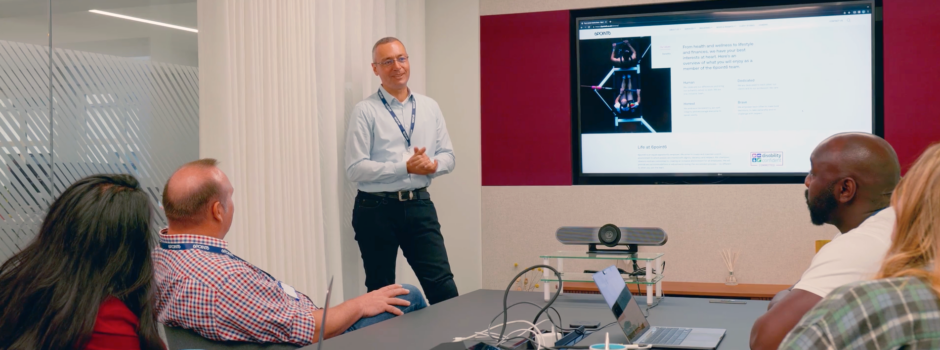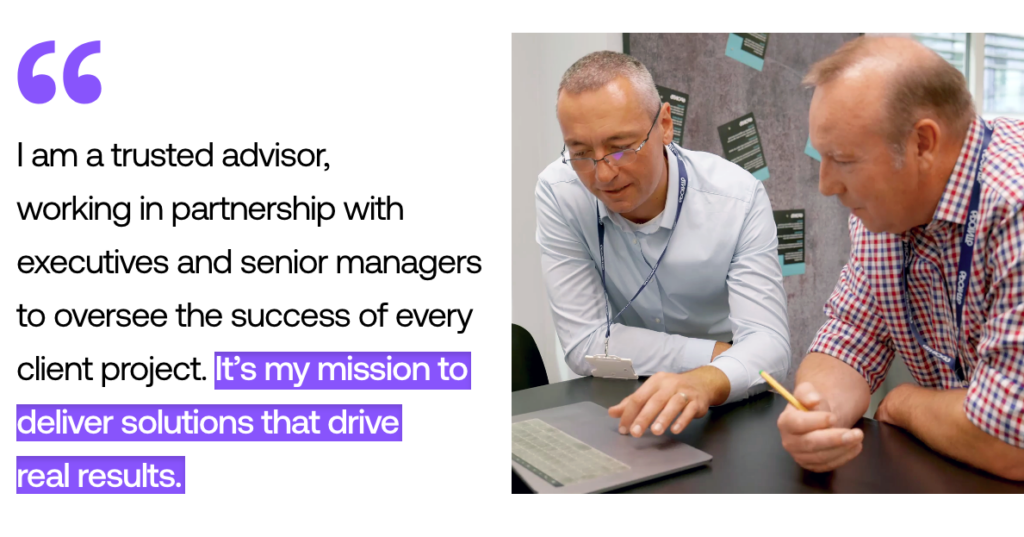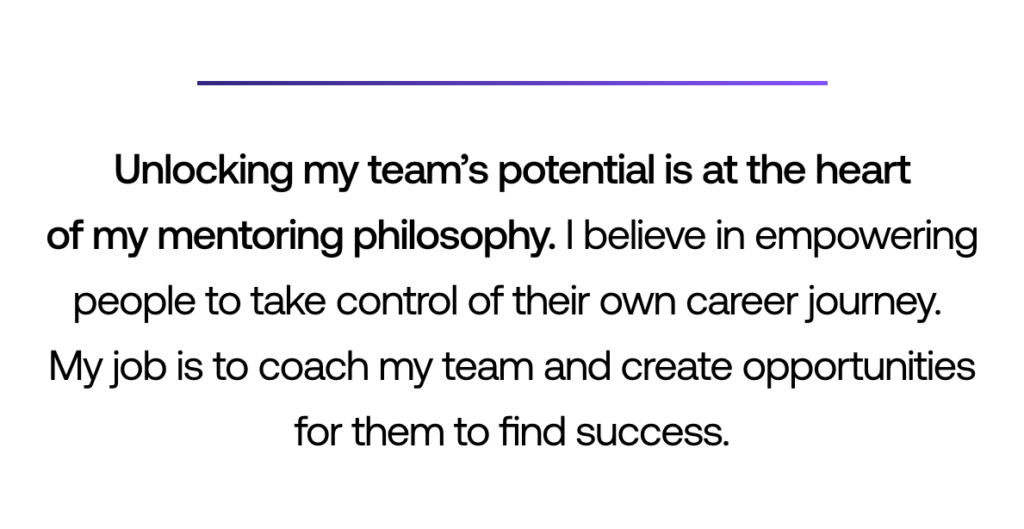Meet Seb Trebaczkiewicz, Head of Enterprise Architecture

Seb explains why 6point6’s leadership and management ethos creates the optimum environment for designing the right solutions for our clients.
What I do
As Head of Enterprise Architecture, I lead 6point6’s team of Enterprise Architects. Our job is to oversee the design and delivery of bespoke enterprise architecture projects, ensuring that technology strategies align with our customer’s long-term goals and objectives. We do this by looking at the transformation our customers want to affect and examining how technology can be the enabler of real outcomes – whether that’s improved end user experiences, greater resiliency, or evolved services.
Implementing the right solutions requires having a deep understanding of how an enterprise operates – so no stone is left unturned! We work with our clients to identify stumbling blocks, from exploring organisational structure, business processes and strategies, to value streams, data and information, and supporting technologies.
Organisations are dealing with constant change as new demands rapidly emerge. In this environment, managing risk has also become a more complex task. That’s where we as Enterprise Architects step in to help organisations plan and execute change successfully. It’s easy to get swept up in technology trends without considering how these can play a part in the business in the long term. But looking at our clients’ strategic objectives – where they want to be – and matching their ambitions enables us to create digital ecosystems that support their goals and deliver value to the business.

A day in my working life
There’s no such thing as a typical day in enterprise architecture! My job is probably 90% collaboration, and much of my time is spent meeting clients and colleagues. 6point6 has grown rapidly over recent years, but we want to retain our tight-knit feel to ensure that everyone, no matter how long they’ve been here or what team they’re in, can feel that they belong.
I work with my team to empower and support them to solve key challenges and complex problems. Our clients are always looking for imaginative, inspiring, and forward-thinking ideas – and it’s my job to create the right environment for my team to make this happen. I believe that harnessing the collective power of our people requires giving them space to innovate and learn. The best thing I can do as a leader is to recognise my team’s unique strengths and passions, encourage them to find success, and coach them to achieve more than they believed possible.
I feel lucky to be surrounded by a great team – we’re always here for each other and there’s always someone ready to lend a hand or offer encouragement. It makes for a great environment, and one that we work hard to protect.
Career highlights
After spending over two decades working within technology and transformation, my career has been anything but boring! There have been some challenges along the way – but these taught me a lot about the value of perseverance and learning from mistakes.
When I was younger, I had a small venture delivering IT solutions and web development services. This was my first foray into Enterprise Architecture, though I didn’t realise it at the time. Bringing together technology and business was full of challenges, and I learnt in those early years just how difficult it is to manage a company. But navigating that challenge is also what I love most about Enterprise Architecture – we bridge that gap where we help both technical and business teams to understand they are really working towards the same goal and objectives.
One of my greatest achievements at 6point6 has been co-designing a bespoke framework and methodology based on 200+ years of my colleagues’ collective experience and knowledge. 6point6’s framework is adaptable and helps to supercharge how we work, ensuring we deliver the right solutions on time and to budget.

Enterprise Architecture is one of the best jobs in the world because…
We’re the trusted advisers and drivers of business change. We’re at the coalface helping organisations meet current and future challenges, including those they might not yet know about. Enterprise Architecture is focused on helping organisations improve decision-making and processes – and that requires someone who has a combination of business acumen, extensive knowledge of the technology landscape, and a deep understanding of user needs as well as how to incorporate them in system design.
What also makes the role exciting is bringing together directorates and departments to focus on unlocking the right outcomes, engaging all audiences, and connecting with different teams to create ecosystems that enable change.
For more information on joining 6point6, visit our careers hub or get in touch with a member of our recruitment team.